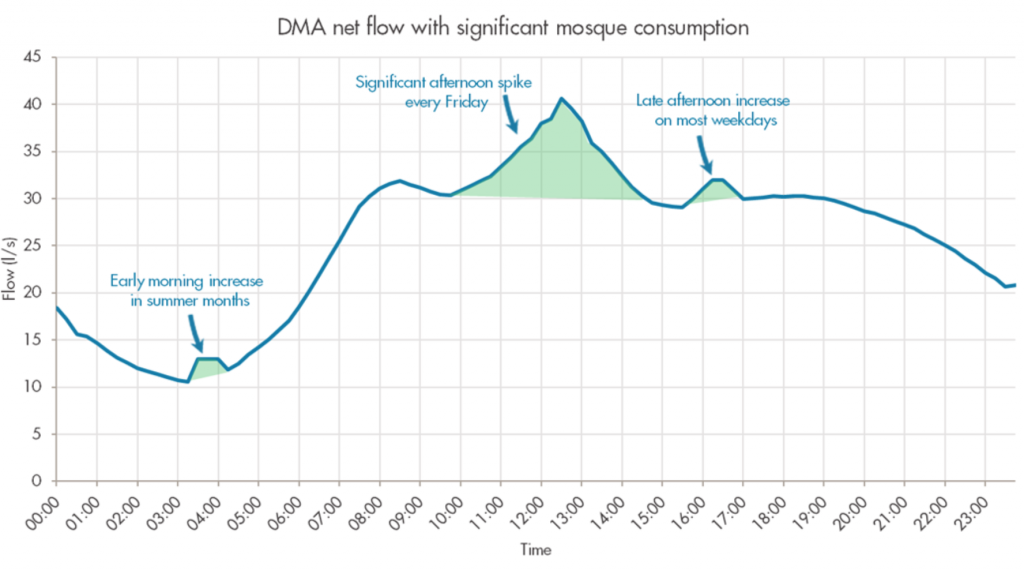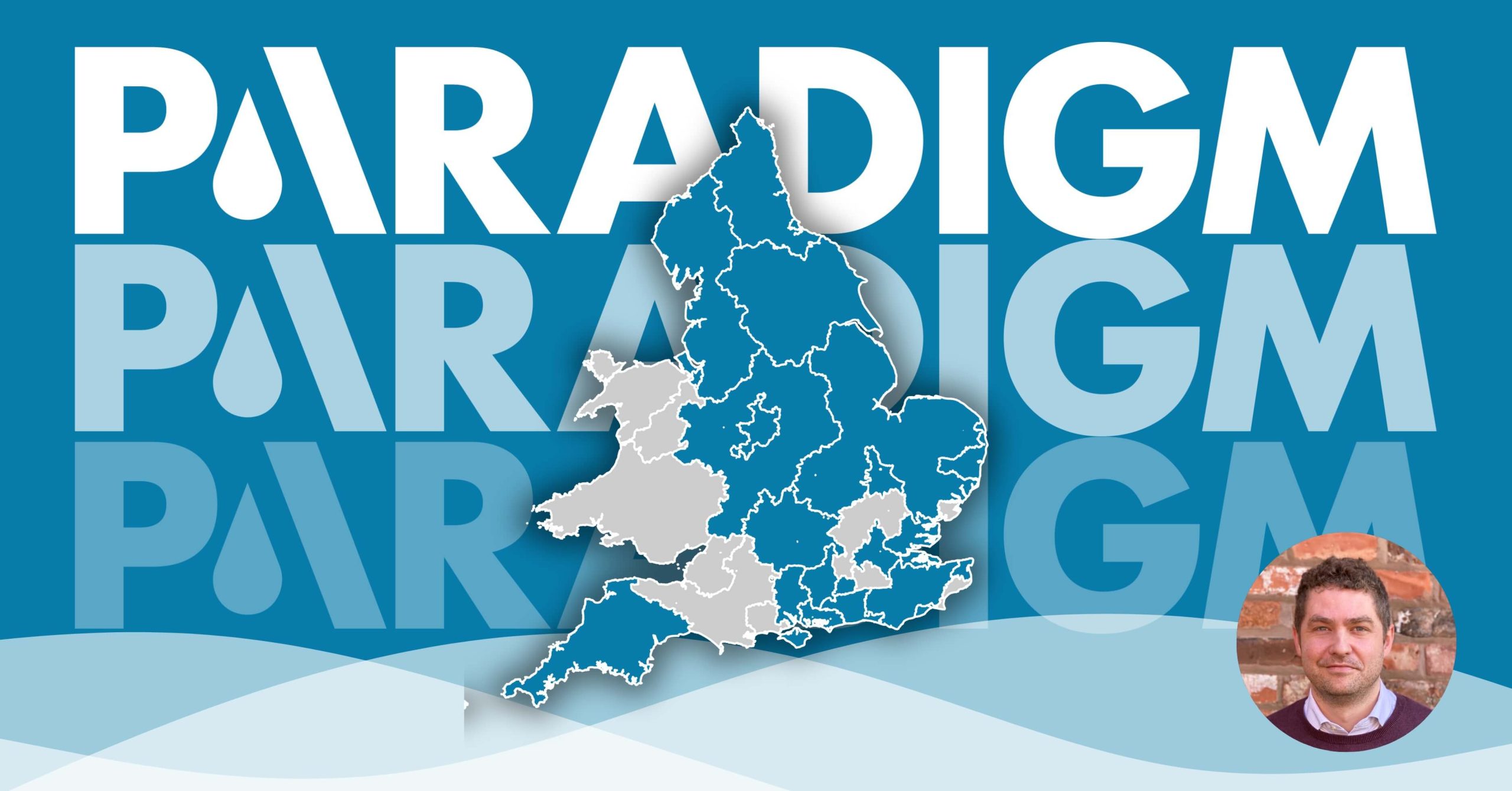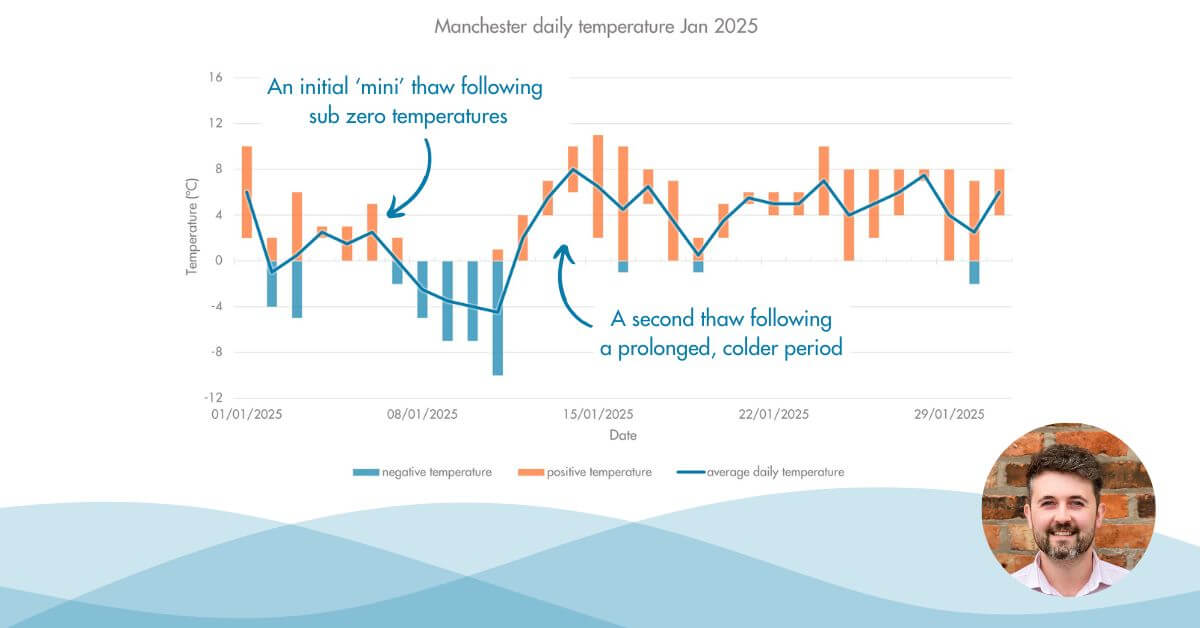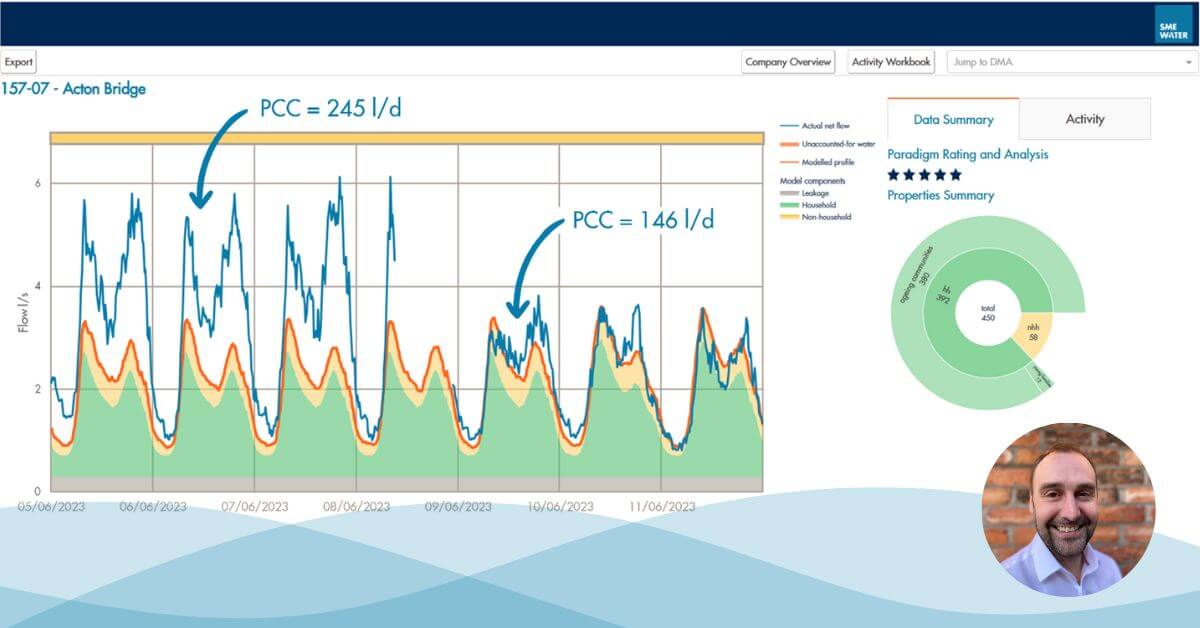Figure 1: DMA net flow with significant mosque consumption
The chart above highlights the following three characteristics:
Spike every Friday afternoon
An increase in consumption every Friday afternoon is a key indicator that a DMA has significant mosque consumption. This spike is usually seen between 12 and 1pm during the winter months, and between 1 and 2pm during the summer months. In some cases, like the example above, the increase can be seen over a period of four hours whereas in other examples we have observed a localised spike lasting just one hour. This is a special prayer for Muslims and can only be observed in a mosque, for this reason it is a key indicator for mosque water consumption.
Late afternoon increase
Another unique behaviour highlighted in the chart above is that there is a small increase in consumption between 3.30 and 5pm on a weekday. This behaviour can be seen throughout the year. On investigation, we learned that it is common for many mosques to host evening classes on weekdays for children. These classes are usually between 4.30 and 8pm. In preparation for these classes, students are required to perform ablution, which helps explain this increase in usage.
Early morning increase in summer
DMAs that experience the afternoon peak on a Friday will also experience increased consumption in the early morning. However, unlike the Friday spike, the time for this increase is affected by sunrise, and varies greatly throughout the year. This means that it sometimes coincides with the minimum night flow period, making it an extremely important consideration for leakage reporting.
Impact on leakage
For several years, many water companies have seen an increase in night usage in some areas due to Ramadan. In many cases this increase has persisted after Ramadan and throughout the summer when it was hoped that consumption would come back down to ‘normal’ pre-Ramadan levels. This was initially ‘labelled’ as an after-effect of Ramadan and largely ignored. As Ramadan is moving away from the summer, this early morning increase is becoming increasingly isolated and can no longer be tied to Ramadan.
Through our work using Paradigm, we have been able to establish that this increase in consumption coincides with the timing of the early morning prayer. The time for this prayer during the summer months happens to coincide with the minimum night flow period, whereas the same prayer during the winter month occurs much later and tends to get ‘lost’ within the morning peak. This means that it is extremely important to investigate and quantify this consumption during the summer months as it currently has an adverse effect on reported leakage.
Conclusion
There are over 2500 mosques in England and Wales, varying in size from small prayer rooms accommodating 10-20 people to purpose built buildings hosting up to 4000 people. They are not evenly spread geographically, and it is not uncommon to see 5 or more mosques in just one DMA. We have seen through our investigations using Paradigm that the impact of one large mosque can be comparable to a number of smaller ones.
One of the main reasons why it is important to investigate mosque consumption is that the DMAs that are most affected by them also happen to be most affected by other factors. Besides Ramadan, these DMAs also tend to exhibit higher than average household daily and night water usage. Because these DMAs tend to be far removed from what is commonly thought of as ‘typical’ consumption, they tend to sit at the top of a water company’s list of ‘problem DMAs’.
Going forward, we will be working with a number of water companies to log a representative sample of mosques throughout the UK to help derive a typical mosque consumption profile. This standardised profile can be used to accurately model and quantify mosque consumption in a DMA. It will also help in deriving more accurate night use allowances which will help water companies target and report leakage more effectively in these DMAs.




